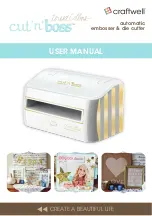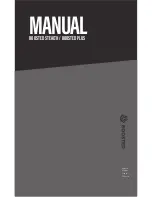
4
Installation and Testing
4.6
Verification Testing
4.6.1 General
The various test procedures which follow are intended to verify
operation of the relay, and to set the various controls for a
specific application. Each phase of a two-or three-phase relay
may be tested as a single-phase device using the procedures
given. Check the Style Number Identification Chart
(Figure 2)
with the style number of the relay to identify the options included
within the specific relay to be tested.
All LED and target indicators should be checked in the course
of carrying out these test procedures. Reminder: The FUNC
TION targets require at least 0.2 A in the output circuit to operate.
When test results do not fall within the specified tolerances, the
following should be evaluated.
1
.
The tolerances of the test equipment;
2.
Cycle-to-cycle phase stability of the test equipment;
3. The tolerances of any external components used in the test
setup.
4.6.2 Scope
A complete checkout of the relay (or "verification" test) confirms
that the following are within the published specifications.
1 . Time overcurrent pickup;
2.
Instantaneous pickup;
3. Time overcurrent timing;
4. Communications option. (The testing procedure for this
option is covered in Siemens
Power Monitor™ Display and
Monitoring Unit
(Manual SG-401 8-01 ).
While every comprehensive test program should cover all of the
above items, the amount oftesting within any category can vary
over a great range. The operational test defined below illustrates
an appropriate lower limit for this range.
4.7 Operational Test
Confirmation of every parameter within the capability of this relay
is usually not practical nor necessary except as an acceptance
Page
20
procedure for a newly delivered relay. Succeeding tests can be
reduced in scope to conserve time (and thereby permit more
frequent tests). Such an operational test may be accomplished
by scaling down the verification tests of this subsection as
follows:
1
. By concentrating on the parameters actually required in the
assigned application;
2. By using spot tests that check (for example) only one or two
multiples of applied TAP current at only one or two TAP
positions.
Accordingly, the procedures described below can serve as the
basis for both verification and operational testing.
This procedure verifies the operation of the unit. Check the Style
Number Identification Chart
(Figure 2)
with the style number of
the relay to identify the options included within the specific relay
to be tested .
4.7.1 Equipment Required
1 . The current source used in the following tests should have
the following capabilities.
a. Current output should be switchable so that the test
current can be set before it is applied to the relay. The
selected operating current can then be switched to the
relay's sensing inputs.
b. The current source needs to be capable of delivering
at least 20 A. This is necessary to test the full capability
of the instantaneous overcurrent element.
c
Because the current levels used to verify operation of
the instantaneous overcurrent element(s) may exceed
the continuous current rating of the relay, it is sug
gested that the current source include a provision for
automatic removal of the test current following a trip.
2. A timer accurate to within 0.001 seconds.
3. Two test plugs, Siemens p/n 00-871 -854-001 , Basler p/n
1 0095, or GE p/n XLA 1 2A. (Replaces the "paddles" when
testing an installed relay.)
4. For bench testing: An appropriate AC or DC power source
for relay operation.
www
. ElectricalPartManuals
. com
















































